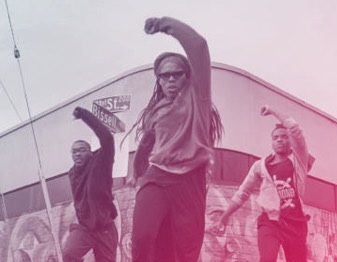The first image on your left as you walk into Stay Home, Will Rogan’s current show at Altman Siegel, is of a book. More specifically, it’s a photograph of a 1970s-era hardback science book, open to a stunning shot of the universe. The title of the photograph, Viewing the Past as It Happens, is lifted straight from the book’s text, but even without the verbage, it’s evident as you walk around Stay Home that the relationship between past and present is much on Rogan’s mind.
The show mixes black-and-white photographs of everyday objects, altered print ephemera, and small sculptures to create what I can only describe as a large, 3-dimensional poem about time and memory. I use the word “poetry” because Rogan gathers his images and objects together in a rhythmic manner: for instance, the universe in Viewing the Past as It Happens shows up a few beats later in the aptly named Universe Party.



True to our experience of memory, Stay Home is replete with cracks, fissures and corners, but somehow all these fragments come together to make a whole.


